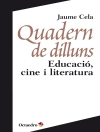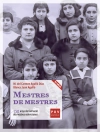This volume provides new insights on creativity while focusing on innovative methodological approaches in research and practice of integrating technological tools and environments in mathematics teaching and learning. This work is being built on the discussions at the mini-symposium on Creativity and Technology at the International Conference on Mathematical Creativity and Giftedness (ICMCG) in Denver, USA (2014), and other contributions to the topic. The book emphasizes a diversity of views, a variety of contexts, angles and cultures of thought, as well as mathematical and educational practices. The authors of each chapter explore the potential of technology to foster creative and divergent mathematical thinking, problem solving and problem posing, creative use of dynamic, multimodal and interactive software by teachers and learners, as well as other digital media and tools while widening and enriching transdisciplinary and interdisciplinary connections in mathematics classroom. Along with ground-breaking innovative approaches, the book aims to provide researchers and practitioners with new paths for diversification of opportunities for all students to become more creative and innovative mathematics learners. A framework for dynamic learning conditions of leveraging mathematical creativity with technology is an outcome of the book as well.
विषयसूची
Introduction Section: Setting the Stage of Investigation.- Chapter 1 Leveraging Mathematics Creativity by Using Technology: Questions, Issues, Solutions, and Innovative Paths (Viktor Freiman and Janet Tassell).- Part 1: Teaching Practices and Instructional Strategies to Inspire Authentic Creativity.- Chapter 2 Screencasting as a Tool to Capture Moments of Authentic Creativity (Dana Cox, Suzanne Harper, and Michael Todd Edwards).- Chapter 3 The Create Excellence Framework’s Impact on Enhancing Creativity: Examining Elementary Teacher Candidate Mathematics Lesson Planning (Janet Lynne Tassell, Rebecca Stobaugh, and Marge Maxwell).- Chapter 4 Impacting Mathematical and Technological Creativity with Dynamic Technology Scaffolding (Sandra R. Madden).- Chapter 5 Three-Act Tasks: Creative Means of Engaging Authentic Mathematical Thinking through Multimedia Storytelling (Adrienne Redmond-Sanogo, Susan Stansberry, Penny Thompson, and Sheri Vasinda).- Part 2: Creativity in Technology-Rich Mathematical Environments.- Chapter 6 Interactive Technology to Foster Creativity in Future Mathematics Teachers (Alfinio Flores, Jungeun Park, and Stephen A. Bernhardt).- Chapter 7 Creativity and the Design of Music-Mathematics Activities in a Virtual Simulation Learning Environment (Trina Davis, Glenn Phillips, and Gerald Kulm).- Chapter 8 Preparing Teachers to Use Excelets: Developing Creative Modeling Experiences for Secondary Mathematics Students (Ginger S. Watson and Mary C. Enderson).- Chapter 9 Creativity in Question and Answer Digital Spaces for Mathematics Education: A Case Study of the Water Triangle for Proportional Reasoning (Benjamin Dickman).- Part 3: New Learning Paths and Creative Teaching Approaches .- Chapter 10 Nurturing Creativity in Future Mathematics Teachers through Embracing Technology and Failure (Marina Milner-Bolotin).- Chapter 11 Harnessing Early Spatial Learning Using Technological and Traditional Tools at Home (Joanne Lee, Ariel Ho, and Eileen Wood).- Chapter12 Video Game Play, Mathematics, and Spatial Skills – A Study of the Impact on Teacher Candidates (Janet Tassell, Elena Novak, and Mengjiao Wu).- Chapter 13 Prototype Problem Solving Activities Increasing Creative Learning Opportunities Using Computer Modeling and 3D Printing (Antonia Szymanski).- Part 4: Creativity and Advanced Mathematics.- Chapter 14 Can a Kite Be a Triangle? Aesthetics and Creative Discourse in an Interactive Geometric Environment (Hope Gerson and Paul Woo Dong Yu).- Chapter 15 Technology and the Development of Mathematical Creativity in Advanced School Mathematics (Sergei Abramovich).- Chapter 16 “Integrating” Creativity and Technology through Interpolation )Bharath Sriraman and Daniel Lande.- Chapter 17 Ancient School without Walls: Collective Creativity in Mathematics Village (Elçin Emre-Akdoğan and Gönül Yazgan-Sağ).- Part 5: Learning from the Theories and Patterns of Students’ Creativity.- Chapter 18 APOS Theory: Use of Computer Programs to Foster Mental Constructions and Student’s Creativity (Draga Vidakovic, Ed Dubinsky, and Kirk Weller).- Chapter 19 The Nature of Knowledge and Creativity in a Technological Context in Music and Mathematics: Implications in Combining Vygotsky and Piaget’s Models (Yves de Champlain, Lucie De Blois, Xavier Robichaud, and Viktor Freiman).- Chapter 20 Putting the Horses before the Cart: Technology, Creativity, and Authorship Harnessed Three Abreast (Osnat Fellus and Y. Biton).- Chapter 21 Virtual Learning Communities of Problem Solvers: A Potential for Developing Creativity in Mathematics (Dominic Manuel).
लेखक के बारे में
Viktor Freiman, Ph. D. in teaching computer science is Full Professor at the Université de Moncton, Canada. His main research interests, besides creativity and technology, focuses on innovations in teaching and learning, STEAM-education, mathematical giftedness, problem solving, virtual learning communities, as well as digital literacy. He is director of the CompéTICA Partnership Network, funded by the Social Sciences and Humanities Research Council of Canada (2014-2017) investigate digital competence development in the life-long perspective. He is also co-editor of the book Series Mathematics Education in the Digital Era (since 2014).
Janet Lynne Tassell, Ph D, is an associate professor at Western Kentucky University, where she teaches elementary mathematics methods and directs the Elementary Mathematics Specialist Endorsement program. Dr. Tassell also teaches identification and current issues courses for the university’s gifted and talented master’s program. Shetaught a semester abroad at Harlaxton College in England.
Dr. Tassell has taught mathematics at the middle school and high school levels. She spent fourteen years as a gifted education coordinator and director of learning and assessment, working with K–12 teachers in curriculum and professional development. She was co-director of the Toyota Math and Technology Leadership Academy and professional development coordinator for the Javits grant Project GEMS (Gifted Education for Math and Science) initiative for grades 3–6 teachers/students. She led a team of fourteen authors to design and write six books for grades 1–6 students to delve deeper into the Common Core mathematics standards. She has published two books with colleagues for elementary and secondary level — Real-world learning framework: Digital tools and practical strategies for successful implementation. Her research interests expand into math anxiety, mindfulness, and video gaming impact on mathematics achievement. Janet received a bachelor’s degree in secondary mathematics education, and both a master’s and a doctorate degree in curriculum and instruction with a mathematics education major and gifted education minor from Indiana University.












